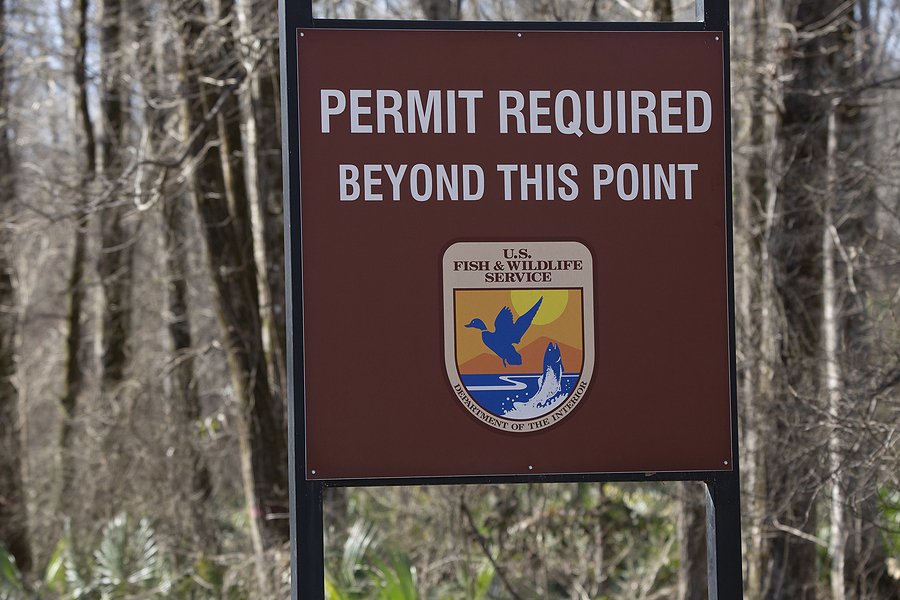Department of the Interior Curbs Preferential Treatment for Wind Energy – U.S. Department of the Interior (.gov)

Report on U.S. Department of the Interior Policy Shift and its Implications for Sustainable Development Goals
Executive Summary
The U.S. Department of the Interior has announced four significant policy measures that reorient the nation’s energy strategy, primarily by ending policies that favor wind energy development. While presented as a move to support energy reliability, affordability, and local stakeholder engagement, these changes have profound and mixed implications for the United Nations Sustainable Development Goals (SDGs). The new directives prioritize certain goals related to local economies, community participation, and biodiversity (SDGs 8, 11, 14, 15, 16) but appear to directly conflict with critical goals for clean energy and climate action (SDGs 7 and 13).
Announced Policy Measures
The Department of the Interior outlined the following four policy changes:
- Ending preferential treatment for wind energy projects in departmental decision-making.
- Restoring a mandate to consider all uses of public lands and waters equally, which includes halting future offshore wind lease sales and considering the withdrawal of onshore areas for wind development.
- Enhancing stakeholder engagement, particularly with tribes, the fishing industry, and coastal communities, regarding offshore wind development.
- Reviewing the impacts of wind turbines on migratory bird populations and the associated regulatory framework.
Analysis of Policy Directives and SDG Implications
1. Ending Preferential Treatment for Wind Projects
Under Secretary’s Order No. 3437, the Department will cease preferential treatment for wind energy, citing concerns over reliability and foreign-controlled supply chains. This policy has direct consequences for several SDGs.
- SDG 7 (Affordable and Clean Energy): This policy directly challenges Target 7.2, which calls for a substantial increase in the share of renewable energy in the global energy mix. By deprioritizing a key source of clean energy, the measure may impede progress toward sustainable and modern energy systems.
- SDG 13 (Climate Action): The move away from supporting wind energy represents a significant setback for national climate mitigation strategies. As wind power is a critical tool for reducing greenhouse gas emissions, this policy runs counter to the urgent action required to combat climate change and its impacts.
- SDG 17 (Partnerships for the Goals): The directive to halt support for energy supply chains controlled by foreign rivals may conflict with the spirit of global partnership for sustainable development, which encourages technology transfer and international cooperation.
2. Re-evaluation of Land and Water Use for Wind Development
The Department intends to terminate designated offshore Wind Energy Areas and may withdraw onshore public lands from wind development consideration to ensure a balance of multiple uses, such as recreation and grazing.
- SDG 14 (Life Below Water) & SDG 15 (Life on Land): The policy is framed as a protective measure for ecosystems. Terminating offshore wind areas is positioned as a way to safeguard marine and coastal ecosystems (Target 14.2), while re-evaluating onshore land use aligns with integrating biodiversity values into national planning (Target 15.9).
- SDG 7 (Affordable and Clean Energy): Halting development in areas with high wind energy potential directly curtails the expansion of renewable energy infrastructure, negatively impacting progress towards Target 7.2.
- SDG 8 (Decent Work and Economic Growth): While the policy aims to protect traditional industries like fishing, it simultaneously risks eliminating significant investment and job creation opportunities within the growing green economy sector.
3. Enhancing Stakeholder Engagement
The Department will strengthen guidance to ensure more meaningful consultation with tribes, the fishing industry, and coastal communities, who are disproportionately affected by offshore wind projects.
- SDG 16 (Peace, Justice and Strong Institutions): This initiative strongly aligns with Target 16.7, which aims to ensure responsive, inclusive, participatory, and representative decision-making at all levels.
- SDG 11 (Sustainable Cities and Communities): The policy supports Target 11.3 by seeking to strengthen the links between development planning and the priorities of local communities and indigenous peoples.
- SDG 8 (Decent Work and Economic Growth): By focusing on consultation with industries such as fishing and tourism, the policy addresses the need to protect local livelihoods and promote sustainable economic activities (Target 8.9).
4. Review of Wind Energy’s Impact on Avian Species
A formal review will be conducted to assess avian mortality rates from wind turbines and determine the adequacy of current permitting and penalties under the Migratory Bird Treaty Act.
- SDG 15 (Life on Land): This review directly addresses Target 15.5, which calls for urgent action to reduce the degradation of natural habitats, halt the loss of biodiversity, and protect threatened species. It reflects a commitment to integrating biodiversity protection into infrastructure development planning.
Analysis of Sustainable Development Goals in the Article
1. Which SDGs are addressed or connected to the issues highlighted in the article?
- SDG 7: Affordable and Clean Energy – The article’s core theme is a shift in national energy policy, focusing on affordability and reliability while moving away from renewable sources like wind energy.
- SDG 8: Decent Work and Economic Growth – The policy changes aim to protect local economies, specifically mentioning the fishing and tourism industries, which are considered integral to the economic well-being of coastal communities.
- SDG 11: Sustainable Cities and Communities – The article emphasizes enhancing stakeholder engagement and ensuring that energy development aligns with local land-use priorities and community values, which is central to sustainable community planning.
- SDG 12: Responsible Consumption and Production – The policy discusses balancing energy development with other uses of public lands, such as recreation and grazing, which relates to the sustainable management of natural resources.
- SDG 14: Life Below Water – The decision to halt future offshore wind lease sales and terminate existing Wind Energy Areas is explicitly framed as a measure to safeguard coastal environments and marine ecosystems from unchecked development.
- SDG 15: Life on Land – The article directly addresses the impact of wind turbines on terrestrial ecosystems by announcing a review of their effect on migratory bird populations.
- SDG 16: Peace, Justice and Strong Institutions – The commitment to improve consultation with tribes, local communities, and the fishing industry reflects an effort to create more inclusive, participatory, and representative decision-making processes in governance.
2. What specific targets under those SDGs can be identified based on the article’s content?
- SDG 7: Affordable and Clean Energy
- Target 7.1: By 2030, ensure universal access to affordable, reliable and modern energy services. The article repeatedly emphasizes “affordable, reliable energy” as the primary goal of the new policy.
- Target 7.2: By 2030, increase substantially the share of renewable energy in the global energy mix. The article addresses this target by actively working against its premise, aiming to end “preferential treatment” for wind energy and halt its expansion.
- SDG 8: Decent Work and Economic Growth
- Target 8.4: Improve progressively, through 2030, global resource efficiency in consumption and production and endeavour to decouple economic growth from environmental degradation. The article connects to this by aiming to protect traditional economic sectors like fishing and tourism from the impacts of wind energy development.
- SDG 11: Sustainable Cities and Communities
- Target 11.3: By 2030, enhance inclusive and sustainable urbanization and capacity for participatory, integrated and sustainable human settlement planning and management in all countries. The policy’s focus on ensuring development reflects “local land-use priorities and community values” and elevating “local voices” directly relates to this target.
- SDG 12: Responsible Consumption and Production
- Target 12.2: By 2030, achieve the sustainable management and efficient use of natural resources. The article mentions the need to ensure “multiple use and sustained yield of public lands,” balancing energy development with uses like recreation and grazing.
- SDG 14: Life Below Water
- Target 14.2: By 2020, sustainably manage and protect marine and coastal ecosystems to avoid significant adverse impacts. The policy to terminate over 3.5 million acres of offshore Wind Energy Areas is a direct action aimed at “safeguarding our coastal environments.”
- SDG 15: Life on Land
- Target 15.5: Take urgent and significant action to reduce the degradation of natural habitats, halt the loss of biodiversity and, by 2020, protect and prevent the extinction of threatened species. The announced review of “avian mortality rates” associated with wind turbines directly addresses the protection of biodiversity (migratory birds).
- SDG 16: Peace, Justice and Strong Institutions
- Target 16.7: Ensure responsive, inclusive, participatory and representative decision-making at all levels. The article explicitly states the Department will “strengthen its guidance to ensure more meaningful consultation” and give tribes and local communities “a real seat at the table.”
3. Are there any indicators mentioned or implied in the article that can be used to measure progress towards the identified targets?
- For Target 7.2 (Renewable Energy Share):
- Indicator: The share of wind energy in the national energy mix. The article implies this will be a key metric, as the policy aims to halt future offshore wind lease sales and potentially stop onshore development, which would negatively affect this indicator’s growth.
- For Target 14.2 (Protect Marine Ecosystems):
- Indicator: The acreage of offshore areas designated for wind energy development. The article provides a specific figure, stating that “over 3.5 million acres offshore were designated as Wind Energy Areas,” which are now being terminated. Progress is measured by the reduction of this acreage.
- For Target 15.5 (Halt Biodiversity Loss):
- Indicator: Avian mortality rates associated with wind energy projects. The article explicitly states the Department will “conduct a careful review of avian mortality rates,” making this a direct, measurable indicator of the policy’s focus.
- For Target 16.7 (Inclusive Decision-Making):
- Indicator: The implementation of updated guidance for stakeholder consultation. The article mentions creating “updated guidance” to address “current gaps” in consultation with tribes, the fishing industry, and coastal towns. The existence and application of this new guidance would serve as an indicator of progress.
4. Summary Table of SDGs, Targets, and Indicators
| SDGs | Targets | Indicators Identified in the Article |
|---|---|---|
| SDG 7: Affordable and Clean Energy | 7.2: Increase substantially the share of renewable energy in the global energy mix. | The halting of future offshore wind lease sales and review of onshore development, impacting the share of wind in the energy mix. |
| SDG 8: Decent Work and Economic Growth | 8.4: Decouple economic growth from environmental degradation. | Policies designed to protect local economies, specifically the fishing and tourism industries, from the impacts of offshore wind development. |
| SDG 11: Sustainable Cities and Communities | 11.3: Enhance inclusive and sustainable urbanization and capacity for participatory… human settlement planning. | The process of ensuring energy development reflects local land-use priorities and community values. |
| SDG 12: Responsible Consumption and Production | 12.2: Achieve the sustainable management and efficient use of natural resources. | The balancing of energy development on public lands with other uses like recreation and grazing. |
| SDG 14: Life Below Water | 14.2: Sustainably manage and protect marine and coastal ecosystems. | The termination of over 3.5 million acres of designated offshore Wind Energy Areas. |
| SDG 15: Life on Land | 15.5: Take urgent and significant action to… halt the loss of biodiversity. | The formal review of avian mortality rates associated with wind turbines in migratory flight paths. |
| SDG 16: Peace, Justice and Strong Institutions | 16.7: Ensure responsive, inclusive, participatory and representative decision-making. | The implementation of strengthened guidance for “meaningful consultation” with tribes, the fishing industry, and local communities. |
Source: doi.gov

What is Your Reaction?
 Like
0
Like
0
 Dislike
0
Dislike
0
 Love
0
Love
0
 Funny
0
Funny
0
 Angry
0
Angry
0
 Sad
0
Sad
0
 Wow
0
Wow
0



























;Resize=805#)








































![China’s photovoltaic cell exports reached 10.38GW in September as third-quarter surge subsided [ SMM Analysis] – Shanghai Metals Market](https://imgqn.smm.cn/production/admin/news/en/pic/XTwWi20251028115805.png?#)









